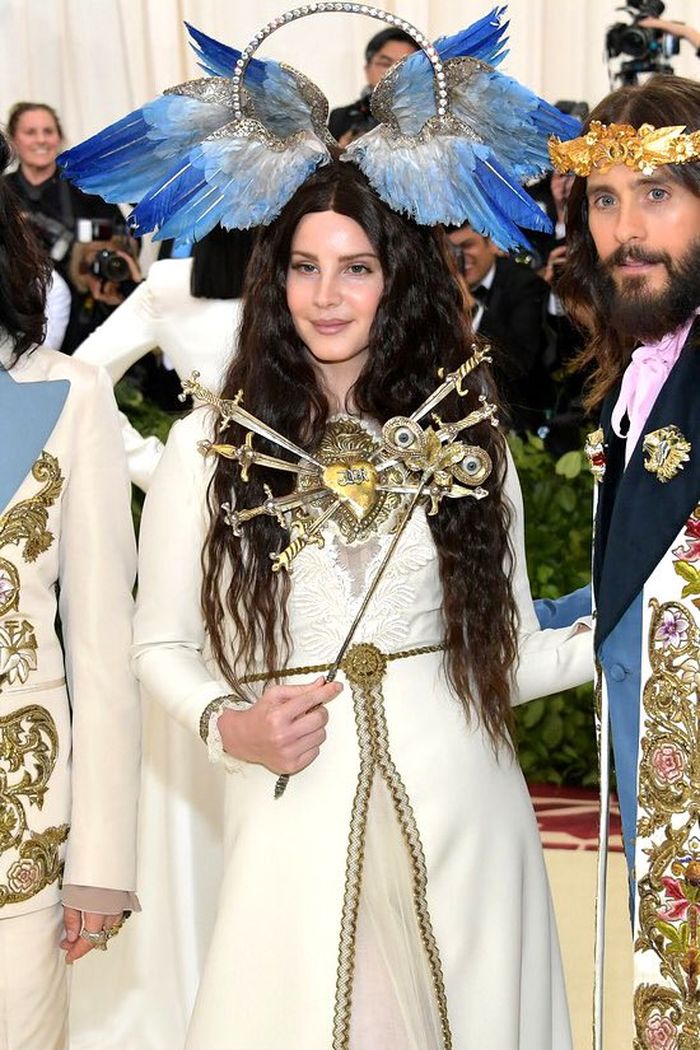The Eternal Relevance of Religious Clothing
Furthering her series on the relationship between religion and fashion, columnist Eliane Bedu explores the continuing history of religious clothing
The meaning surrounding religious clothing in the Bible varies greatly between the Old and the New Testament. Deuteronomic clothing is often associated with penitence and mourning. People cover themselves in sackcloth as a sign of mortification, or rip apart their clothes to symbolise their grief and heartbreak. On the other hand, Jesus’ miraculous garment sets a completely different tone in the New Testament. As soon as the bleeding woman affirms that “If I just touch his clothes, I will be healed” (Mk 5.28), Christian clothing becomes redeeming. From that point onwards, colours are tainted with significance. Jesus’ red robe from the passion is reused to honour idols, whereas white, symbolising Christ’s baptism, is worn by neophytes for every sacrament up to their wedding.
“Christian clothing [...] represents luxury, sacredness, but also rigour and discipline”
Religious clothing is also used as a means of communication, conveying information about the person who wears it. That is why Christian monastic orders each have used fashion (in its primary sense), to specify their status. However, it should be noted that religious clothing’s codification is anterior to Christianity. Already in the Old Testament, authors specified what clothing was appropriate for priests (see in Exode 28, Exode 39, Leviticus 8). Each of them was wearing a linen tunic with a sacerdotal belt and turban, even though details varied for sacrificial priests. Christian religious clothing, contrary to what may be thought, is not inspired by Jewish clothing, but by Greek and Roman dignitaries’ clothes. Those ruling classes used fashion as a means to show their wealth and rank in society, and even though Christian priests’ garments aim at reflecting the sacred, they also represent the Church in all its magnificence. Clothes are authoritative in themselves, impressing the crowds, embodying holiness through the richness of their realisation. Colours, garments, everything is symbolic. Robes differ depending on the season, the ceremonies, and religious festivals. Pink, for example, is a rare colour used only on the fourth Sunday of Lent, as well as the third Sunday of Advent. On the contrary, green, emblematising the renewal of life, is used on an everyday basis, all year around.
Therefore, it comes without surprise that Christian clothing has become a source of inspiration for fashion designers. It represents luxury, sacredness, but also rigour and discipline. It is the authoritative power of the religious garment that inspired Gabrielle Chanel at the start of her career. After being born in Saumur in 1883, she spent her youth in the Abbaye of Aubazine, where she stayed from the age of twelve to eighteen. It is actually in this orphanage that she learned how to sew, while being greatly inspired by the décor and the nuns’ austere looks. Coco reused the slender and straight cut of their dresses in many of her collections, notably in her ‘little black dress’ to which she sometimes added a white collar, also recalling the strictness of the institution.
“The sexualisation of religious clothing was interpreted as a mockery”
Chanel’s implicit and prudent nod to religious clothing differs greatly from more contemporary interpretations of the religious garment. What the 2018 Met Gala has proven is that the religious can also be lavish and sexy. Taylor Hill, dressed in Diane Von Fustenberg, displayed a reinterpretation of a cardinal’s cassock and cope as she wore a black halter dress with a mid-thigh slit and plunging neckline, belted with red satin and accessorised with a cross necklace. In another spirit, Lilly Collins was wearing a cut-out mini dress with a tulle over-skirt. The gown, designed by Givenchy, was inspired by the nuns’ chasuble and was complemented by a silver halo and a rosary.
But the outfit that stole the show that night was Rihanna’s pontifical tiara and embellished embroidery strapless mini dress. In the 850s, we had the legend of Pope Joan, a young woman who supposedly acted as pope for a number of years, her gender going unnoticed. In the 21st century, we’ve got Pope Rihanna. Her entire outfit, designed by Maison Margiela, was encrusted with pearls and jewels, embroidered with silver thread. Yet even though this outfit was a masterpiece when it comes to high fashion and handicraft, it did not meet with unanimous approval in the Christian community: the sexualisation of religious clothing was interpreted as a mockery.
In a puritan Christian America, a barely-covered cardinal is a provocation. Dolce & Gabbana’s more historically accurate coat dress from the Fall 2018 Ready-to-wear collection was perhaps a more respectful use of religious clothing. Sacramental garments can be a fantastic source of inspiration, as Coco Chanel’s sage black and white dresses prove, but designers also need to be reminded that one’s faith is something that cannot be hijacked for the sake of fashion’s creativity. The nobility of religious clothing, its history, rigour and symbolism are not to be stripped down. The tributes paid by the designers to the Church by using it as a source of inspiration should not turn into derision. As the saying goes, one person’s freedom ends where another’s begins.
 News / Cambridge student numbers fall amid nationwide decline14 April 2025
News / Cambridge student numbers fall amid nationwide decline14 April 2025 News / Greenwich House occupiers miss deadline to respond to University legal action15 April 2025
News / Greenwich House occupiers miss deadline to respond to University legal action15 April 2025 Comment / The Cambridge workload prioritises quantity over quality 16 April 2025
Comment / The Cambridge workload prioritises quantity over quality 16 April 2025 Features / The TikTok college: using social media in access and outreach15 April 2025
Features / The TikTok college: using social media in access and outreach15 April 2025 Sport / Cambridge celebrate clean sweep at Boat Race 202514 April 2025
Sport / Cambridge celebrate clean sweep at Boat Race 202514 April 2025






